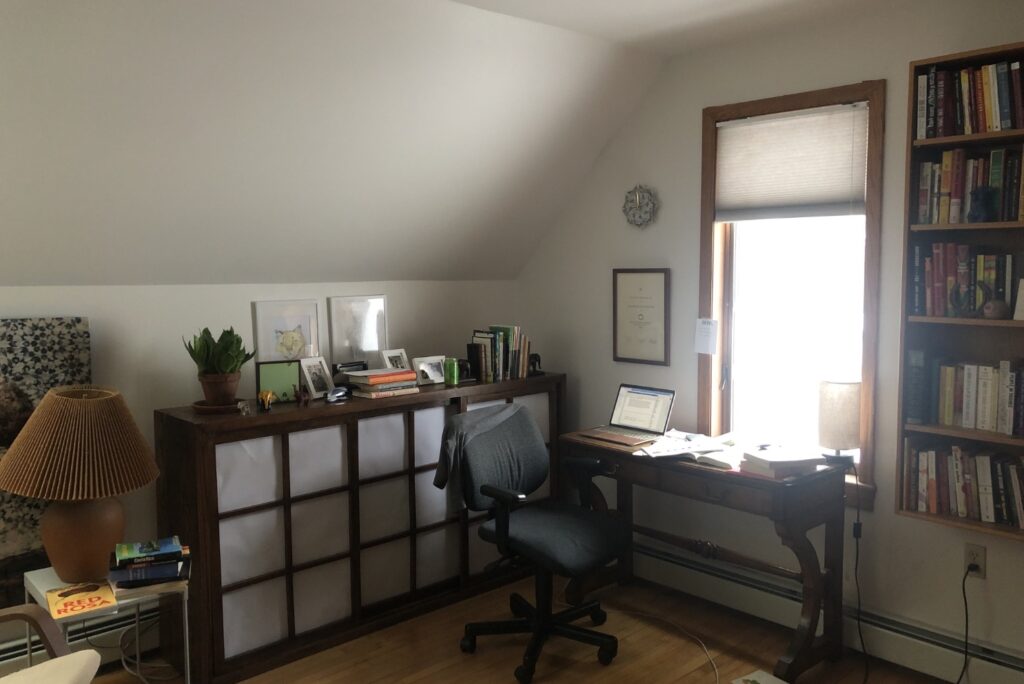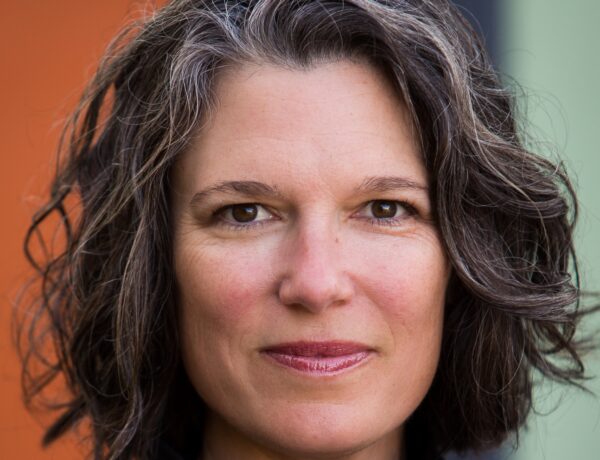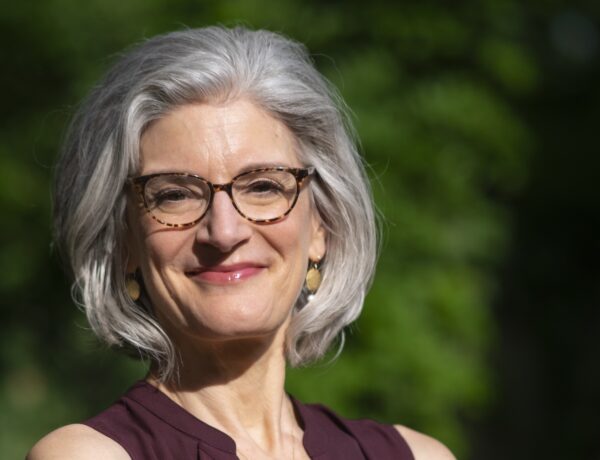Antonia Angress, a novelist hailing from Los Angeles and raised in San José, Costa Rica, holds a degree from Brown University and an MFA from the University of Minnesota.
During her time at the University of Minnesota, she was honored as a Winifred Fiction Fellow and a College of Liberal Arts Fellow. Antonia currently resides in Minneapolis with her husband, artist Connor McManus and Sirens & Muses is her debut novel.
Each week, we publish a new daily writing routine from a famous author. Subscribe to our newsletter so you don’t miss out!
Hi Antonia! We’re delighted to have you as a guest on Famous Writing Routines. For our readers who may not be familiar with your work, could you please give us a brief introduction to yourself?
I’m a writer from Costa Rica, where I was raised in a Jewish-American expat family. As an adult, I’ve lived in the Bay Area, Providence, and New Orleans, and am now based in Minneapolis. My debut novel, Sirens & Muses, was published in July 2022 by Ballantine, an imprint of Random House.
Sirens & Muses follows four striving, struggling artists, first at an elite New England art school and later in Occupy-era NYC. It’s a campus novel and a queer coming-of-age story about art, ambition, and first love. Think The Marriage Plot meets Fates and Furies meets Portrait of a Lady on Fire.
Can you talk about your experience as a Winifred Fiction Fellow and a College of Liberal Arts Fellow at the University of Minnesota MFA program?
MFA programs get a lot of hate—for both good and bad reasons, in my opinion—but my graduate experience was overwhelmingly positive. Before grad school, I had spent five years teaching elementary school Spanish and struggling to write Sirens & Muses in the evenings and on weekends.
The University of Minnesota’s MFA program changed my life by giving me the time and the creative and financial support I needed to finish my novel. It also gave me a community of writers. Previously, I’d worked largely in solitude, with my partner as my only reader.
But in grad school, I was surrounded by people whose work I admired and who loved books as much as I did. Writing a novel is a long, arduous, and lonely process; I can’t emphasize enough how much it helps to have friends who are doing it alongside you.
Back to your debut novel, Sirens & Muses, can you tell us about your inspiration for the setting and characters in the book?
I’ve always been fascinated by the creative process and the question of how people become artists. I should say from the outset that I’m not a visual artist, nor did I go to art school. I’m an amateur in the original sense of the word: a lover of art.
However, I am the daughter of an artist. I grew up surrounded by my mom’s artwork and her art books, and even though my family’s income didn’t come from her art, she always put her creative practice at the center of her life. This made a huge impression on me as a child.
When I got older and went to college, I met my now-husband, who is also an artist, a painter primarily. Over the years, I’ve observed his artistic development up close, and I’ve also been what some might call his muse, appearing in many of his paintings. Thanks to my mother and my partner, I’ve gotten to witness the long process through which art comes to be—the confluence of experiences, ideas, obsessions, and trial and error that go into making a work of art.
Art history really came alive for me in college, though, when I took a class with a wonderful professor named Rebecca Moholt. who tragically passed away soon after the end of the semester. In her lectures, she focused as much on the work as on the artists themselves. Their talents and flaws and foibles. Their personal dramas and the inextricability of their work from its historical context.
So before I’d even begun to imagine Sirens & Muses, Rebecca Moholt gave me a model for thinking and writing about art and artists—one that was accessible and jargon-free and, most of all, deeply human. And that, to me, is what’s most fascinating about art: not only the object itself and the power it has over the artist or viewer or collector, but also the human story behind it. This was what I was trying to get at in my novel.
Another piece of this is that I went to college next door to the Rhode Island School of Design. While I was an undergrad, I started working as a figure drawing model—partly because nineteen-year-old me thought it terribly romantic, and partly because it paid twice as much as other campus jobs.
During this time, I became fascinated by the RISD students, who, it seemed to me, were having a much more intense college experience than I was. They were in a pressure-cooker environment, experimenting not only with who they were as people—the way everyone does at that age, I think—but also who they were as artists. Art school struck me as a narratively fertile setting for a novel.
Seeing an art career up close and pursuing a creative career of my own has also driven me to think deeply about the financial realities of a life in the arts, and to consider how class, race, and even geography intersect with career trajectories and societal notions of success and failure.
In my novel, some of these themes are depicted through the prism of the Occupy Wall Street movement, which arose while I was a junior in college and profoundly affected the way I thought about my generation’s future.
Readers will note that the novel’s emotional core is a romantic and artistic relationship between two women, and that, too, is rooted in personal experience. As I was writing this book, I was also asking questions about my sexuality and coming to terms with the fact that I’m bisexual. It felt very natural to me to express my own yearnings and questions through my characters.
In short, all the above experiences and interests eventually came together in the form of Sirens & Muses, which is of course about art and love and politics, but at its core is a story about figuring out who you are and what you want and what’s important to you.

How does the theme of authenticity play out in the relationships and artistic pursuits of the characters in the book?
Sirens & Muses raises questions about the uneasy alliance between capitalism, creativity, and commodification. The novel explores the possibility of authenticity in art in the context of a society—and, more specifically, a contemporary art world—in which value is predicated on price, and which increasingly treats art as a vehicle for financial investment, like a stock pick.
I was wary of moralizing or telling the reader what to think, so each character in the novel has a different relationship to art, money, and survival within our flawed capitalist system. Karina, for instance, sees no problem with painting what she knows the market wants; whereas Preston aspires to carve out a career outside the capitalist gallery/museum system, and Louisa approaches art spiritually, as both an extension of her own sense of self and a vehicle for transcendence.
The question of which approach is more “authentic” goes unanswered. It’s up to the reader to make up their mind, and I suspect that, just as in the novel, their answer will often depend on their own positionality.
Can you talk about the significance of the title Sirens & Muses and how it relates to the story and themes of the novel?
The novel is explicitly interested in the figure of the muse and in creative collaboration more broadly. What does it mean to draw inspiration from someone else? At what point does inspiration become theft? And what does it mean to see oneself refracted through another person’s gaze?
In Greek mythology, the rivals of the Muses are the Sirens, human-headed birds who lure sailors to their death and have historically been symbols of dangerous temptation. The novel is populated with literal sirens (Louisa’s bird-woman paintings) as well as metaphorical ones.
Throughout the narrative, the characters take turns being sirens and muses, and sometimes they are both at once. They tempt each other, inspire each other, and desire each other. Artistic collaboration becomes a site of intimacy and connection, but also conflict and betrayal.
Can you discuss your writing routine and how you approach the creative process when working on the book?
I think of my creative process as not unlike painting insofar as it consists of layering. I don’t outline my drafts; when I begin working on a novel, all I have in mind are a few schematic characters, a setting, and a handful of ideas and themes that I want to explore. My first draft is essentially a base layer, a foundation upon which I build the novel.
With each subsequent draft, I layer in something new, refining the characters, plot, and language as I go. I try to move through drafts as quickly as I can, resisting the urge to linger in problem areas and trusting that solutions will arise naturally as part of the writing process, perhaps months or even years down the line.
This means that I write many, many drafts. I’m also a slow-and-steady writer: I aim to produce a minimum of 500 words a day, every day (it goes without saying that I don’t always reach this goal!). Sirens & Muses took me ten drafts and over six years to complete.
What did a typical writing day look like for you when you were working on the novel?
When I began writing Sirens & Muses, I was in my early twenties and just out of college. I was working as an elementary school Spanish teacher and wrote whenever I could find a scrap of time—mostly in the evenings after work and on weekends.
In grad school, for the first time in my life, writing became my job. I would spend mornings reading and preparing for workshop and I’d write in the afternoons and at night. My routine has remained consistent since graduating.
I still work with students part-time, so in the morning I focus on their work and do other miscellaneous tasks, like answering emails. The afternoon is when my brain kicks into high gear. I write for as long as I can, then break for a yoga class, followed by dinner. Then, unless I have an evening engagement, I keep writing, often late into the night.
What does your writing workspace look like?
My partner and I recently moved out of our small apartment and bought a house, so for the first time in my life I have a dedicated home office. It’s a spacious, cozy room full of art, plants, books, and treasured knickknacks. I write at an antique desk that I inherited from my grandmother, but I may switch to a sit-stand desk soon to save my back.

Affiliate disclaimer: Some links on this website are affiliate links. We may earn a small commission if you make a purchase through these links, but only promote products we truly believe in. We disclose affiliate links and give honest reviews.



No Comments